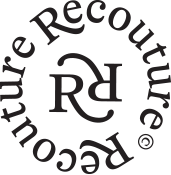Handwoven Bag Strap Kathmandu
Lengt 125cm
Adjustment 25m
This handbag strap are handwoven by Tibetan women in a refugee camp in Pokhara, Nepal. Each one is a testament to the artisan's beautiful craftsmanship, with its own unique color and pattern story, making them one-of-a-kind. The handbag charm are made of Tibetan sheep wool from the Tibetan Plateau and buffalo leather. The technique used is tablet weaving.
Bente Brat is the Norwegian artist behind these belts. Bente's friend and collaborator, Chaktor, the former head of the workshop in Kathmandu, has assisted Bente in communicating with the Tibetan women about designs and colors. It's a great and important collaboration across continents, religions, and languages.
Lengt 125cm
Adjustment 25m
This handbag strap are handwoven by Tibetan women in a refugee camp in Pokhara, Nepal. Each one is a testament to the artisan's beautiful craftsmanship, with its own unique color and pattern story, making them one-of-a-kind. The handbag charm are made of Tibetan sheep wool from the Tibetan Plateau and buffalo leather. The technique used is tablet weaving.
Bente Brat is the Norwegian artist behind these belts. Bente's friend and collaborator, Chaktor, the former head of the workshop in Kathmandu, has assisted Bente in communicating with the Tibetan women about designs and colors. It's a great and important collaboration across continents, religions, and languages.
Lengt 125cm
Adjustment 25m
This handbag strap are handwoven by Tibetan women in a refugee camp in Pokhara, Nepal. Each one is a testament to the artisan's beautiful craftsmanship, with its own unique color and pattern story, making them one-of-a-kind. The handbag charm are made of Tibetan sheep wool from the Tibetan Plateau and buffalo leather. The technique used is tablet weaving.
Bente Brat is the Norwegian artist behind these belts. Bente's friend and collaborator, Chaktor, the former head of the workshop in Kathmandu, has assisted Bente in communicating with the Tibetan women about designs and colors. It's a great and important collaboration across continents, religions, and languages.
-
The straps are handwoven by Tibetan women in a refugee camp in Pokhara, Nepal. Then, they are transported to Bente's leatherworker in Kathmandu, who adds leather and buckles before sending them to a workshop in the northern part of Kathmandu. From there, the straps are shipped to Norway. Bente's friend and collaborator, Chaktor, the former head of the workshop in Kathmandu, assists Bente in communicating with the Tibetan women. It's a wonderful way to collaborate, Bente says.
-
Handwoven items are known for their unique charm and character, a result of the exceptional craftsmanship that goes into making them. When wearing them, handle with care.
-
At Recouture, we believe in the power of collaboration and the celebration of female artistry. That's why we're proud to introduce products handcrafted by incredibly talented women artisans, presented by Recouture & Friends.
These unique and beautifully handcrafted products are the result of a true labor of love. Each piece is meticulously created by skilled women artisans who bring their passion, creativity, and heritage to every stitch.
By supporting this collection, you not only acquire a one-of-a-kind piece but also contribute to the empowerment and economic independence of these remarkable women. We are honored to partner with them to bring their creations to a wider audience.
Bente Brat
Bente grew up surrounded by creativity. With a father who had a ceramics workshop at home and created many exciting things, including textiles and other materials. He was trained as a painter and sculptor. Bente worked in his workshop for many years but needed to find her own expression, which turned out to be silk painting for many years, which also took her to Asia in the footsteps of silk and many new adventures.
In 2002, Bente established a weaving workshop in Kathmandu with her good friends Pia Tashi Dam and Karma Tashi. At that time, they primarily used cashmere wool and yak wool collected by nomads from the Changtang Plateau (Tibetan Plateau). They employed skilled women and men from different tribes, a colorful collection, mainly Tibetans, Hindus, Muslims, and Christians. Bente finds it fantastic to collaborate with people who know the local language and have respect for all religious beliefs
Bente Brat






